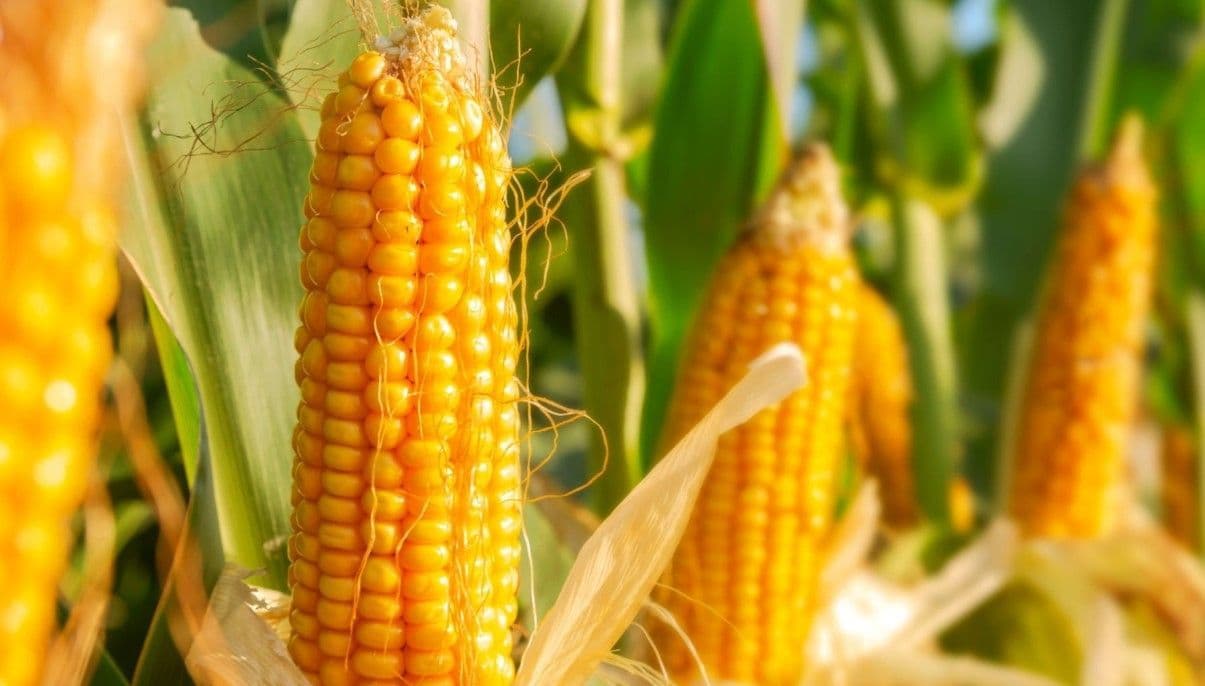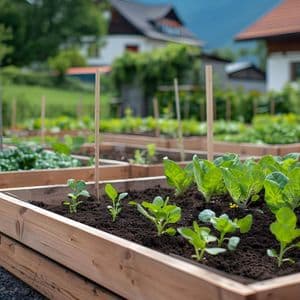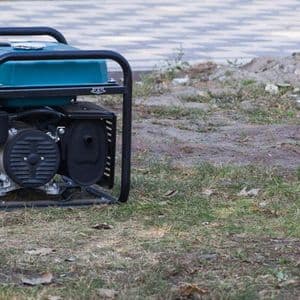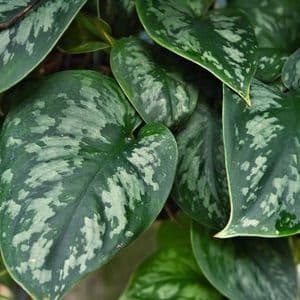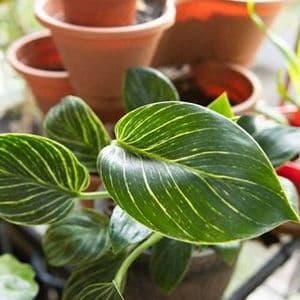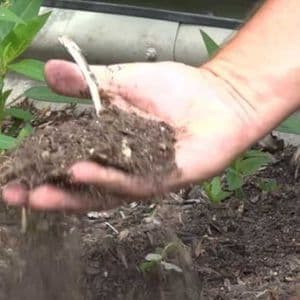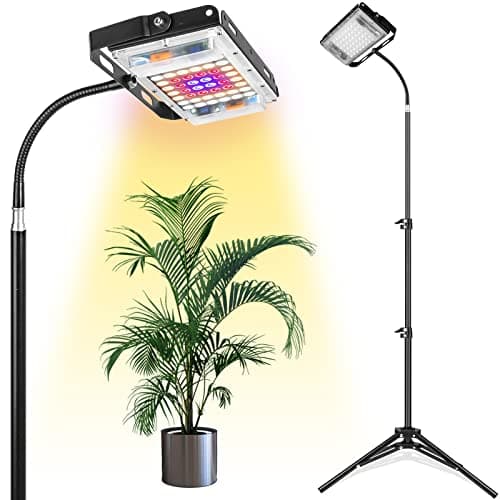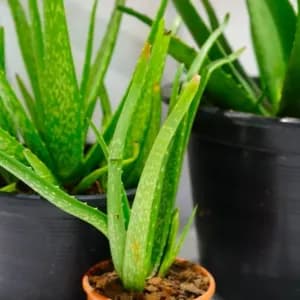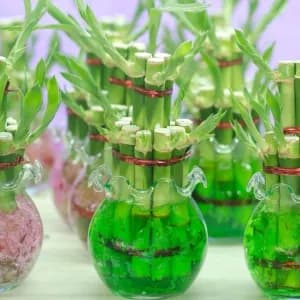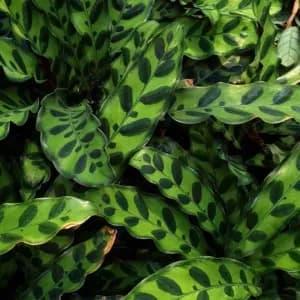Popular indoor plants, corn plants are admired for their tall, slender stalks and abundant foliage. These plants are a great option for both novices and seasoned gardeners because of how simple they are to care for. With proper maintenance, maize plants may reach heights of up to six feet, giving a touch of elegance and greenery to any space.
Overview
| Flower Color | White, yellow |
| Sun Exposure | Partial |
| Soil Type | Moist, well-draining, loamy |
| Bloom Time | Late fall and then again in late spring; nighttime bloomer |
| Botanical Name | Dracaena fragrans |
| Common Names | Corn plant, dracaena, false palm |
| Plant Type | Broadleaf, evergreen, shrub/tree |
| Family | Asparagaceae |
| Native Area | Africa (tropics) |
| Soil pH | 6.1 to 6.5 (Acidic) |
| Mature Size | 15–50 ft. tall, 3–10 ft. wide outdoors; container-grown plants can grow up to 6 ft. tall |
| Hardiness Zones | 10–12 (USDA) |
Types of Corn Plants
- Dent corn: This type has kernels with a dent or depression at the crown, caused by the shrinkage of the soft starch during drying. Dent corn is mainly used for animal feed, ethanol production, and industrial products such as starch and oil.
- Flint corn: This type has kernels with a hard and smooth outer layer, which protects them from pests and diseases. Flint corn is also known as Indian corn or ornamental corn, and is used for decoration, popcorn, and some traditional dishes in Latin America.
- Sweet corn: This type has kernels with a high sugar content, which makes them sweet and juicy. Sweet corn is harvested before maturity, when the kernels are still milky and tender. Sweet corn is consumed fresh, canned, or frozen, and is a popular vegetable in many cuisines.
- Popcorn: This type has kernels with a thin and hard outer layer, which traps moisture inside. When heated, the moisture turns into steam and causes the kernel to explode, creating a fluffy and crunchy snack. Popcorn is usually seasoned with salt, butter, cheese, or caramel, and is enjoyed as a snack or dessert.
- Waxy corn: This type has kernels with a high amylopectin content, which gives them a waxy appearance and texture. Waxy corn is mainly grown in China and Southeast Asia, where it is used for food products such as noodles, dumplings, and soups.
How to Grow and Care for Corn Plant
Choose the Right Soil
Corn plants prefer well-draining soil with a pH between 6.0 and 6.5. You can use a commercial potting mix or make your own by combining equal parts peat moss [2], perlite, and vermiculite. Alternatively, craft your custom mix by combining equal parts of peat moss, perlite, and vermiculite. This ensures your corn plants receive the right balance of aeration and moisture retention for healthy root development.Provide Adequate Light
Corn plants prefer bright, indirect light. They can also tolerate low light conditions, but this may slow down growth. Avoid direct sunlight [3], as this can scorch the leaves. Providing appropriate light is key to the success of your corn plants. They flourish in bright, indirect light that mimics their natural habitat. While corn plants are adaptable to low light environments, keep in mind that this may slow down their growth. Strive for a balance by placing your plant where it receives filtered sunlight. Shield it from direct sunlight, as this can cause leaf scorching. Achieving this balanced light exposure will contribute to lush foliage and robust growth.Water Regularly
Achieving the right watering balance is crucial for the health of your corn plants. Aim for consistent moisture without waterlogging the soil. Monitor the top inch of the soil; when it feels dry to the touch, it's time to water. Ensure your pot has drainage holes to allow excess water to escape, preventing root rot. When you water, do so thoroughly, until you see water escaping from the drainage holes. This practice encourages deep root growth and prevents the formation of standing water.Fertilize Monthly
Corn plants benefit immensely from a regular feeding schedule. During the growing season, which spans from spring to fall, fertilize your plant once a month. Choose a balanced, water-soluble fertilizer to provide essential nutrients. This routine nourishment supports vibrant foliage and robust growth. Remember, moderation is key; avoid over-fertilization, which can lead to salt buildup and harm the plant. A consistent and measured approach to fertilization will contribute to a healthy and thriving corn plant.Propagating Corn Plants
How to Grow Corn Plant From Seed
Potting and Repotting Corn Plant
Common Problems With Corn Plant
Yellow leaves
Overwatering, underwatering, and exposure to extreme cold or heat can all contribute to this. Examine the soil's moisture content, then alter your watering plan as necessary. Get your plant out of the path of heaters, drafts, and direct sunshine. To make your plant seem better, you can trim off the yellow leaves.Brown leaves
If you overwater your plant or use contaminated equipment, this may be brought on by bacterial or fungal diseases. Trim off and discard the damaged stems and leaves. Before reusing your pots and equipment, sterilize them. Improve the air circulation around your plant and refrain from sprinkling water on the foliage.Leaves falling off
Stress-related factors, such as abrupt changes in temperature, light, or humidity, may be the cause of this. Avoid moving your plant too frequently and try to keep it in a stable setting. To raise the humidity, you may also routinely spray your plant. If just the bottom leaves drop off, it's usual for corn plants to do so as they become older, so don't be alarmed.Stem rot
This can be caused by soft rot bacteria that enter through wounds or cuts on the stem. The stem will become mushy, smelly, and blackened. There is no cure for this disease, so you will have to discard your plant and start over with a new one.FAQs
Why are my corn plant's leaves turning yellow?
Yellow leaves can be a sign of overwatering, underwatering, or nutrient deficiencies. Check the soil moisture and fertilization schedule, and adjust as needed.How often should I repot my corn plant?
Corn plants don't need to be repotted very often. You can wait until the plant becomes root-bound or until the soil starts to break down, which usually takes two to three years.Can I propagate my corn plant?
Yes, corn plants can be propagated by stem cuttings. Simply cut a stem with a few leaves attached, and place it in a jar of water until roots develop. Then, plant the cutting in soil and care for it as you would a mature plant. The New York Garden works under restricted procurement guidelines and relies on peer-reviewed studies and studies conducted by academic organizations. Tertiary references should be avoided. For more information on how we ensure our material is correct and up to date, please visit our editorial policy.- Lighting conditions - Federal Trade Commission
- Peat moss - NATIONAL MINERALS INFORMATION CENTER
- Direct sunlight - National Library of Medicine

